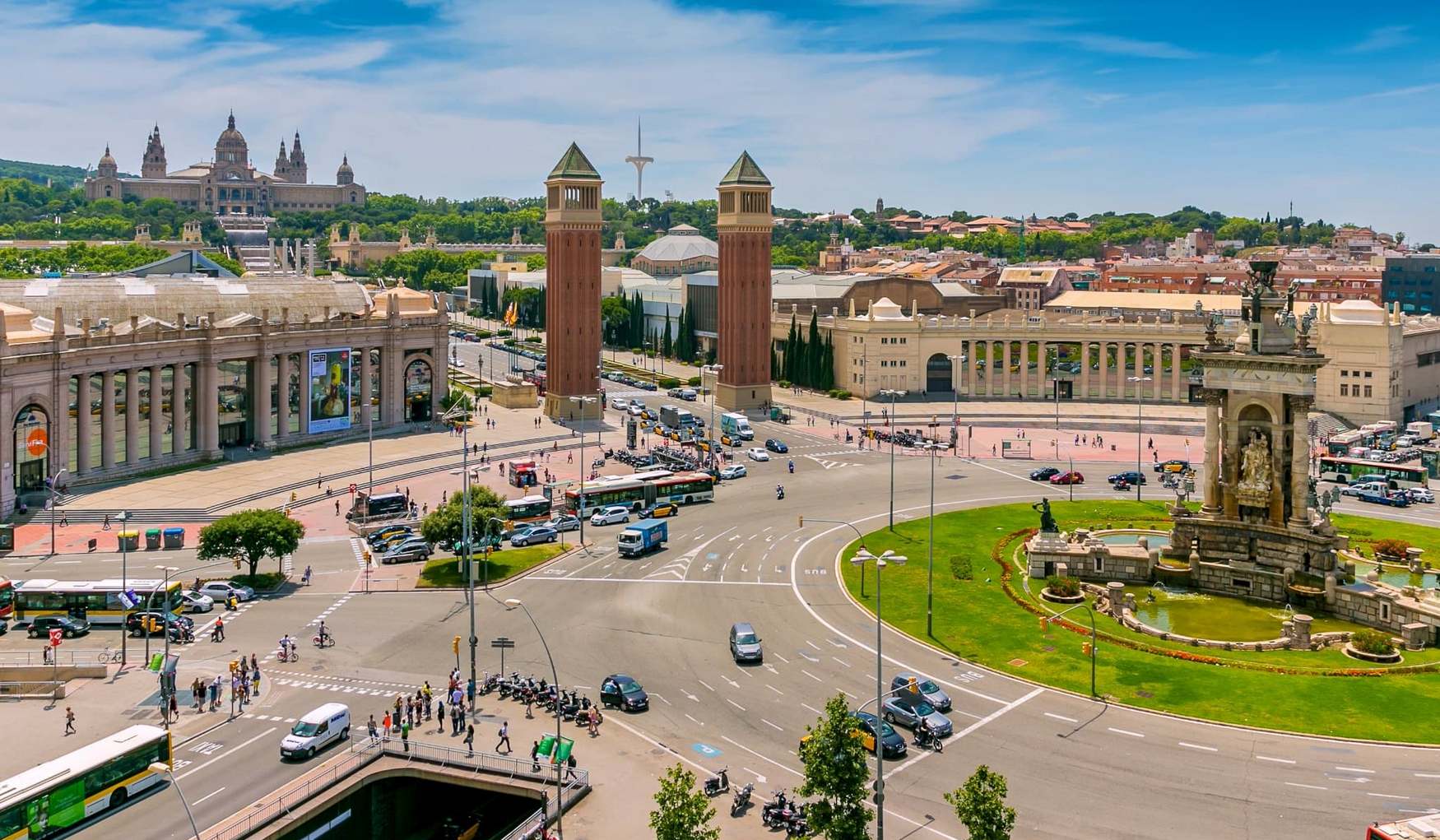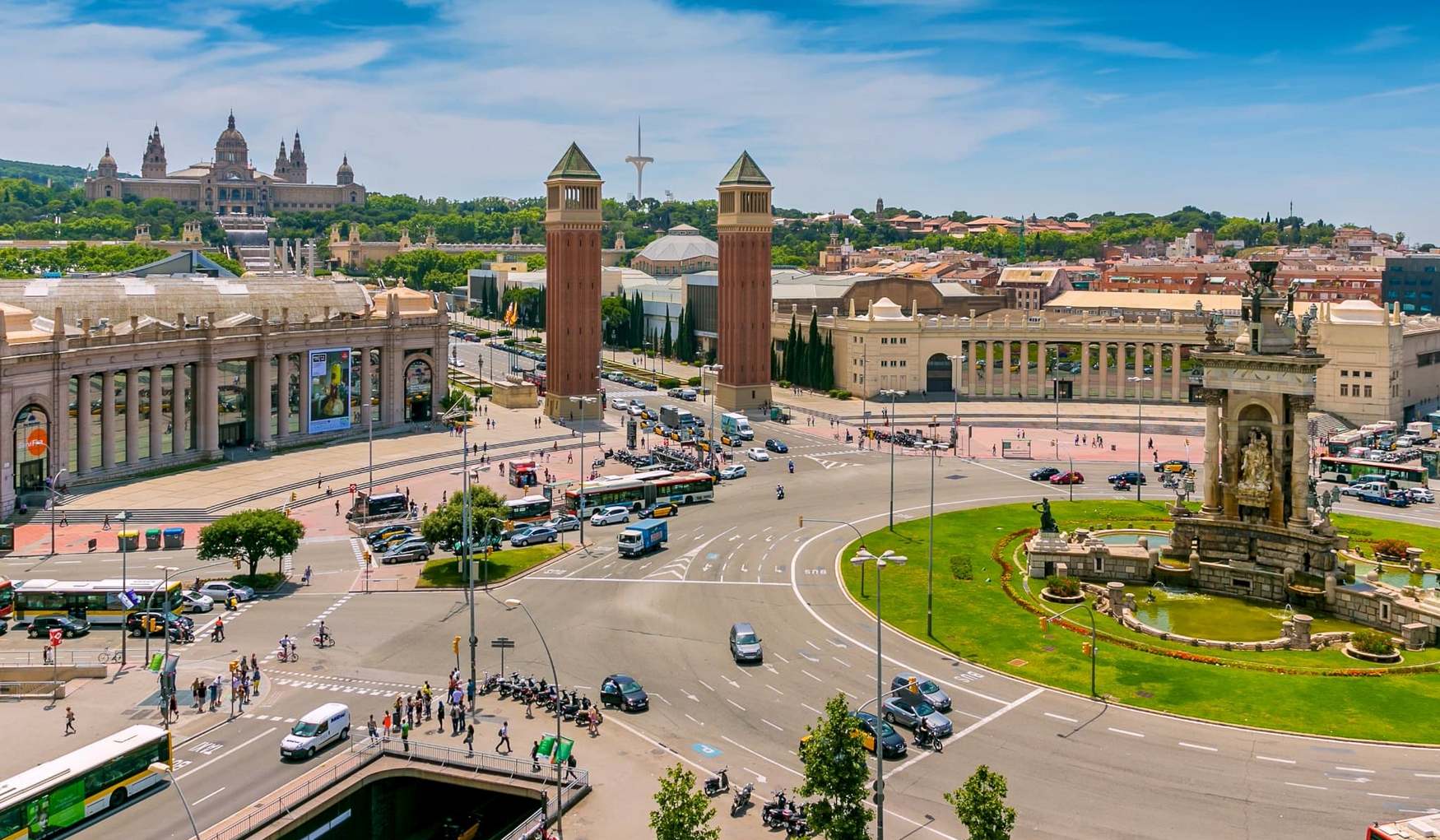Plaza de España in Barcelona is located near the Montjuic mountain and is a favourite place for visiting tourists — both young people and families with children.
Luxurious buildings surround it, and in the middle is a monumental fountain built back in 1929. Despite the busy car traffic, the space filled with light and air, surrounded by bright green lawns and trees, creates a comfortable atmosphere for walking at any time of the day.
Getting to Plaza España is easy, as it serves as an excellent transport interchange thanks to the presence of three metro lines (L1, L3, L8) and the commuter train station.
When you exit the metro, you will immediately have a stunning view of the park, the cascade of fountains and the palace. Numerous signs help you quickly navigate the terrain. A distinctive feature of the area, which occupies more than 30,000 square meters of free space, is its monumentality and the thoughtful arrangement of all objects, thanks to which Placa Espanya is considered one of the best examples of architectural planning in Europe.
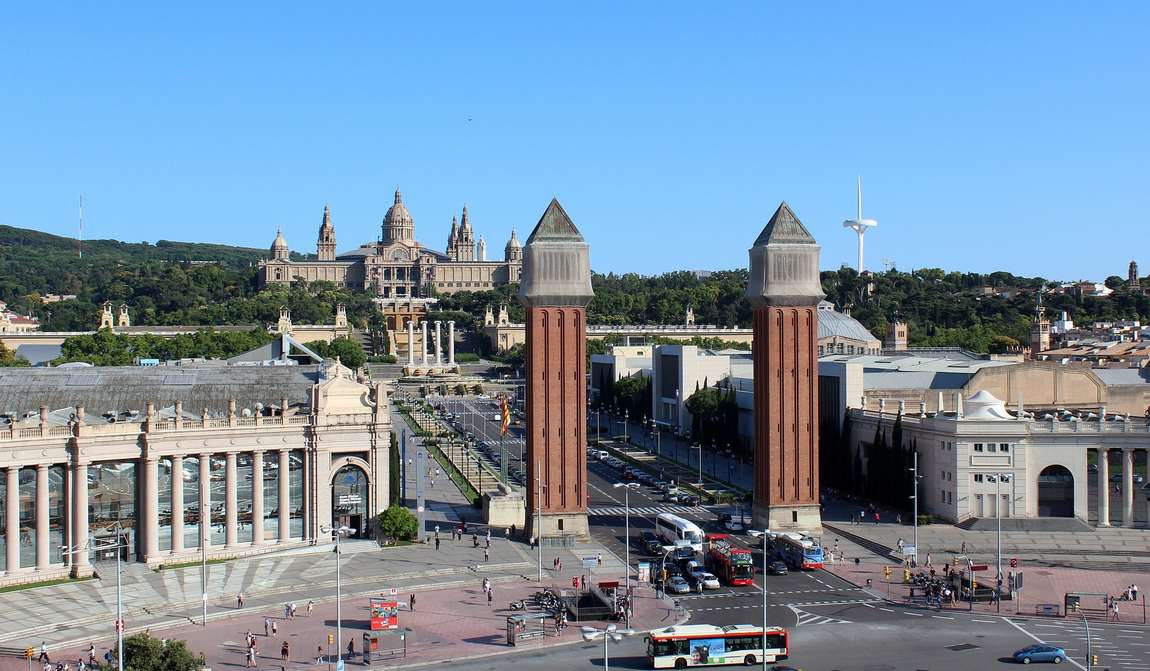
History of Plaza España in Barcelona
In the Middle Ages, then still empty space was used as a venue for public autodafés and other types of execution. In the early 18th century, the Citadel (Ciutadella) was built on the site.
Some people mistakenly believe that its main purpose was to protect the town. In fact, King Philip V of Spain erected a massive fortification to punish the indomitable Catalans for betrayal in the war against the combined forces of England, Holland, Austria and Savoy.
In this way, the monarch demonstrated the immutable and absolute power of the Bourbon dynasty and maintained complete control over Barcelona.
The Plaza de España appeared only in 1905, becoming the arena of meetings and politicians' speeches. The layout authors were Josep Puy Cadafalsh and Guillem Busquets, who achieved a surprisingly harmonious combination of restrained classics and pompous baroque. Antonio Darder completed the arrangement of the square.
The project of the houses surrounding the square belongs to the architect and landscape designer Nicolau Maria Rubier i Tuduri, a gifted young man and protégé of the famous French designer Jean-Claude Forestière. In 1920, together, they built a park complex on Mount Montjuic.
In 1928, the square began to be rebuilt, trying to give it a more modern look for presentation at the 1929 World's Fair and provide enough space for exhibition pavilions.
Initially, they were supposed to be installed in the Plaza de España only for the duration of the event. Nevertheless, some of the structures turned out to be so unique that it was decided to leave them on the square forever.
Many old buildings were destroyed, and instead of them, two Venetian towers 47 meters high each were built, which served as the basis for installing gates that opened the way to the expositions.
They are a replica of the bell tower in St. Mark's Square in Venice and face Reina Maria Cristina Avenue, where you can visit temporary exhibitions on various topics and a fair.
Fountain in the square
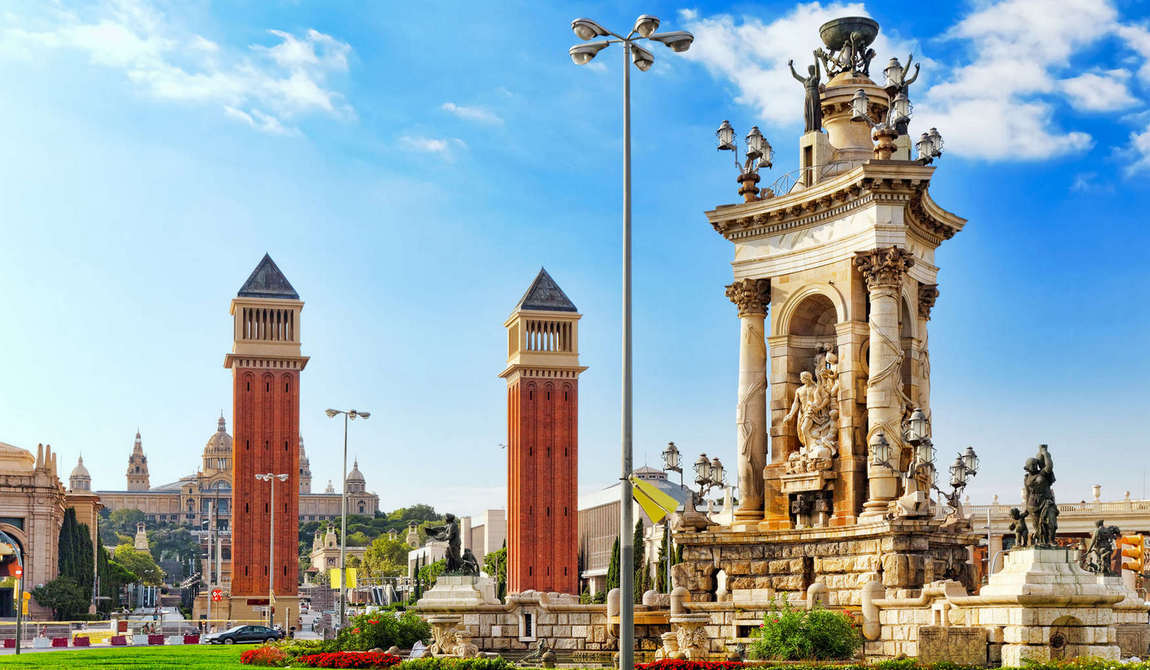
The author of the fountain was Josep Maria Jujol, a student of the great Antonio Gaudi and one of the most prominent architects of Catalan Art Nouveau. At first, as a worthy follower of his teacher, he wanted to build an original design in the best traditions of modernism, but by then, this style was already out of fashion.
That is why today we see a building in a classical style with art deco and Baroque elements.
In implementing his plan, the master relied on one of the squares of the Vatican, the author of which was the famous Bernini. Today, the fountain sits in the centre of Placa Espanya, surrounded by an expansive green lawn and a traffic circle.
The statues in the fountain are the work of Michele Bly and form a sculptural composition called 'Rivers of the Mediterranean'. The stone figures are dressed in Greek and Roman clothing.
The water between them symbolises the rivers flowing into the Atlantic and the Mediterranean. The columns at the pedestal are decorated with religious motifs, and on its edge are sculptures honouring the sea as thanks for the benefits and prosperity it has brought to the country.
One of the compositions is dedicated to the Greek goddess of health, Hygiea (it was from her name that the word "hygiene" came). Another sculpture depicts a woman with a child holding a fish in one hand and a ship in the other.
The composition symbolises maritime navigation and fishing. Other figures glorify prosperity, faith, courage, art and commerce.
The best activities to do in Spain Square
Different in their purpose but always impressive sights, the Plaza de España are a unique architectural ensemble that creates a comfortable atmosphere for a good rest. Some objects are located directly on the square; some must be walked.
Montjuic
If you have the time and desire, you can climb the slopes of Montjuic, a 173-meter-high hill, the largest city park. The famous neo-futuristic TV Tower, built in 1992 in honour of the Summer Olympic Games in Barcelona, is at its top.
Together with children, you can visit the open-air cinema, have a delicious meal in the cafeteria, relax on the sunny outdoor terrace, enjoying the panoramic views of the surroundings. Fans of spa treatments will undoubtedly appreciate the massage rooms.
National Palace of Barcelona (Palau Nacional)
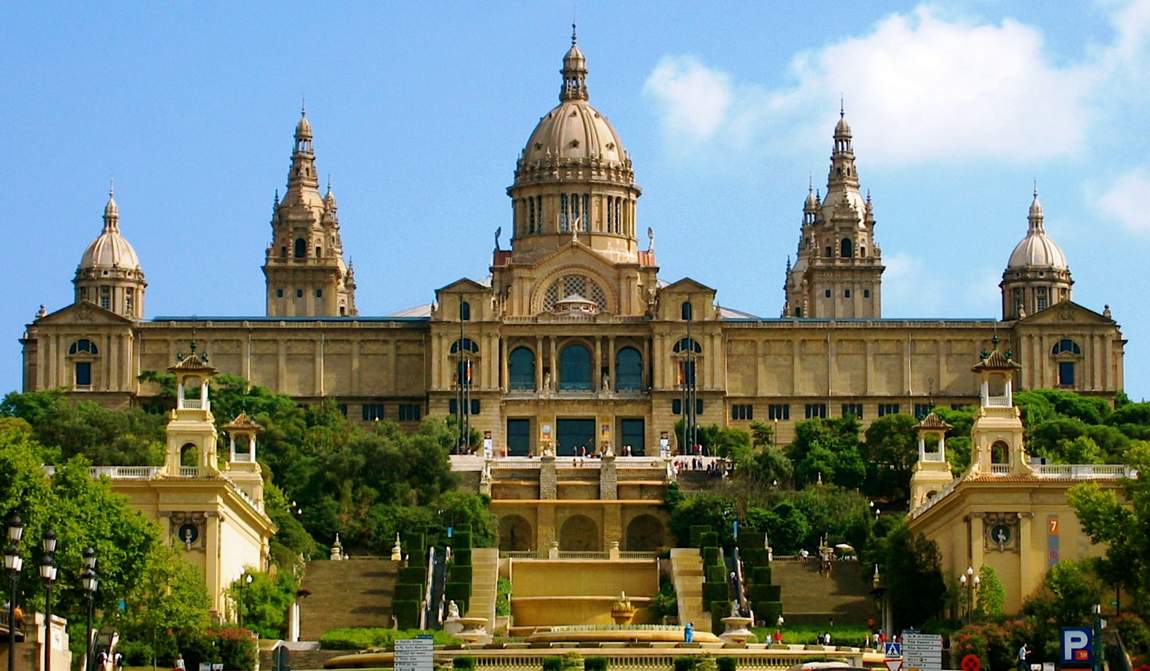
The neo-Gothic palace was built in 1929, especially for the World's Fair. The architects were Pedro Cendoja Oskoz and Enrico Catala. They realised their vision and created a building stylised after the palaces in which the European royal families lived.
Today, the building houses exhibitions in the National Museum of Art of Catalonia, presenting ancient and contemporary masterpieces of Catalan and Romanesque art. You'll see many works from the Middle Ages and early Christianity. The collections include masterpieces by great masters such as Rubens, Velázquez and El Greco.
Some exhibitions present a vast collection of works by Catalan masters of the 20th century. As for the Romanesque heritage, you can see the 12th and 12th-century frescoes collected from small churches in the Pyrenees and brought into the museum.
A permanent video also shows how the frescoes were removed, conserved and relocated. In 1992 the Palau Nacional Oval Hall underwent restoration, and in the 2000s, architects Gae Aulenti and Josep Benedit reconstructed the entire palace.
Magic fountains
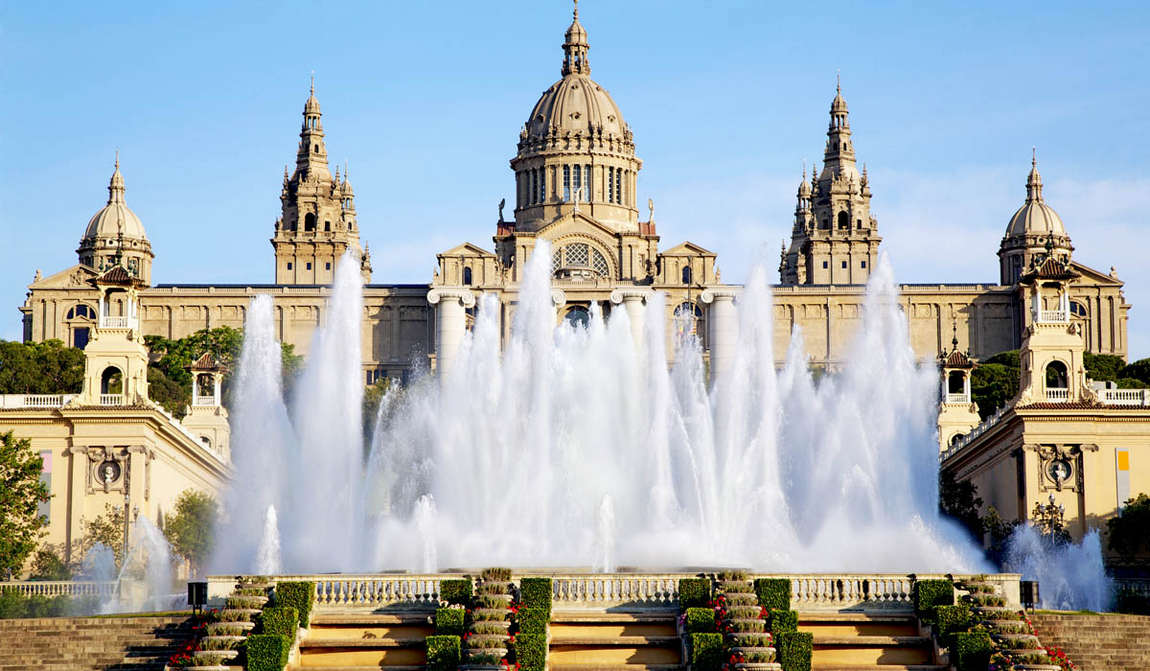
When you reach the foot of Montjuïc and walk up the picturesque avenue, you will see the beautiful fountains (Font Magica). The flowing water and upward springs listen to the rhythm and dynamics of the music, keeping it perfectly in sync with the melody.
In the evening, the water is illuminated in different colours, and it seems like the rainbow is laughing and dancing to the audience's delight. This picturesque and colourful spectacle leaves you and your children speechless. Musicians and singers often accompany the light show.
Note that the most magnificent and original musical performances occur on Christmas and New Year's Eve. The fountain reproduces 7 billion combinations of water movement and light beams.
Las Arenas Shopping Centre
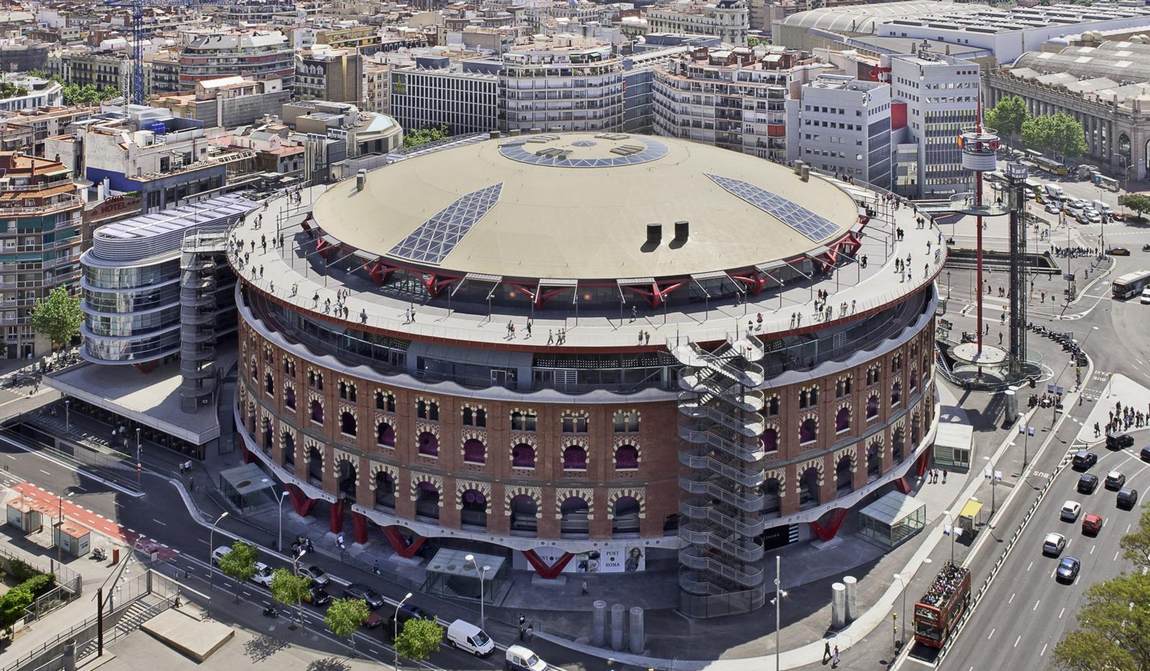
The circular, perfectly symmetrical brick building originally served as a bullfighting venue. It was built in 1900 in the Neo-Moorish style. Then it was renovated, raised several floors, and in 2011, it opened one of the largest shopping centres in the city - just the perfect place for shopping.
Its domed roof is an excellent vantage point for a 360° view and offers fantastic photos of the entire area. Many restaurants and cafeterias are open on the vast terrace, so you'll enjoy the cityscape with a cup of coffee and your kids with a scoop of ice cream or another delicious dessert.
Anyone can go up to the observation deck on the escalator for 1 euro. If you want to make the ascent with comfort and pleasure, use the paid elevator with transparent walls.
By the way, other restaurants are hospitably waiting for you on the floors of Las Arenas. Babbi shop, Suchimore, Abrassame, Amorino, Bitte Wurst and others are considered the best establishments in the city, where excellent cuisine and varied menus are combined with reasonable prices.
Conference Centre Fira de Barcelona
What else is there to see in Barcelona's Plaza España? You certainly wouldn't want to miss the Fira de Barcelona, built in 1932, which hosts exhibitions, global symposia and other large-scale events today.
For example, every February, it hosts the World Mobile Congress, which is dedicated to cutting-edge mobile technology and brings IT professionals, engineers and technicians worldwide.
Next to the Exhibition Centre is the Tourist Information Desk, where you can address any questions and get further advice on sightseeing around the Spanish Plaza.
Caixa Forum
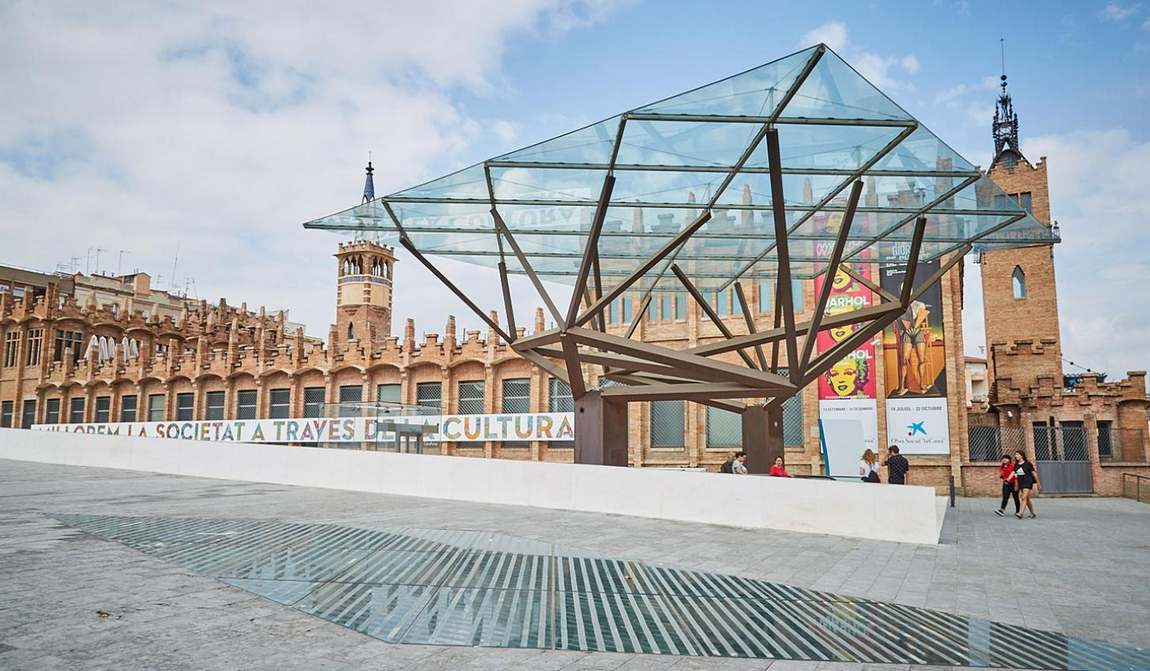
The building was built in the then fashionable Art Nouveau style by Josep Pui Cadafalch, the same Catalan architect who designed the entire Plaza España. Caixa Forum used to be a textile factory, but in 2002 the production facilities were transformed into a temple of art.
Today it is a cultural centre under the patronage of La Caixa Bank of Catalonia. It hosts an art museum with free admission and holds exhibitions and other art world events.
Exhibitions are renewed on average three times a month. There are a total of 4 exhibitions on different themes, so be sure to find something that appeals to you, be it Goya, Delacroix or Sorolla.
From the terrace of the Caixa Forum, you can admire the fantastic view of the Montjuic, the singing fountains and other attractions on the square.
The Barcelona Pavilion
The uniqueness of this construction is that it did not serve as an exhibition space at all for displaying art objects or technical achievements but was itself an exhibit.
Unfortunately, the original structure mysteriously disappeared when it was taken to Germany in 1930 at the end of the World Exhibition. By order of the Barcelona authorities, the pavilion was restored in 1986 as one of the city's museums.
The entire structure is remarkable for its luxury, elegance and understated but no less expensive decoration. The foundation of the building is made of Roman travertine, and the walls are made of natural onyx.
The pillars are green and alpine marble and the outdoor courtyard has two pools lined with black glass.
There is no single door in the pavilion, not a single enclosed room. There aren't even any interior furnishings, except a few armchairs covered in light leather. The public so well received them that furniture in this style (the Barcelona models) is still being produced today.
The only decorative element inside the building is the statue "Morning" (in some versions ", Dancer") by sculptor Georg Kolbe.
Today, the museum of the architect Ludwig Mie van der Rohe is open in the pavilion, which contains photos and documents telling about the life and work of the German modernist architect.
Poble Espanyol
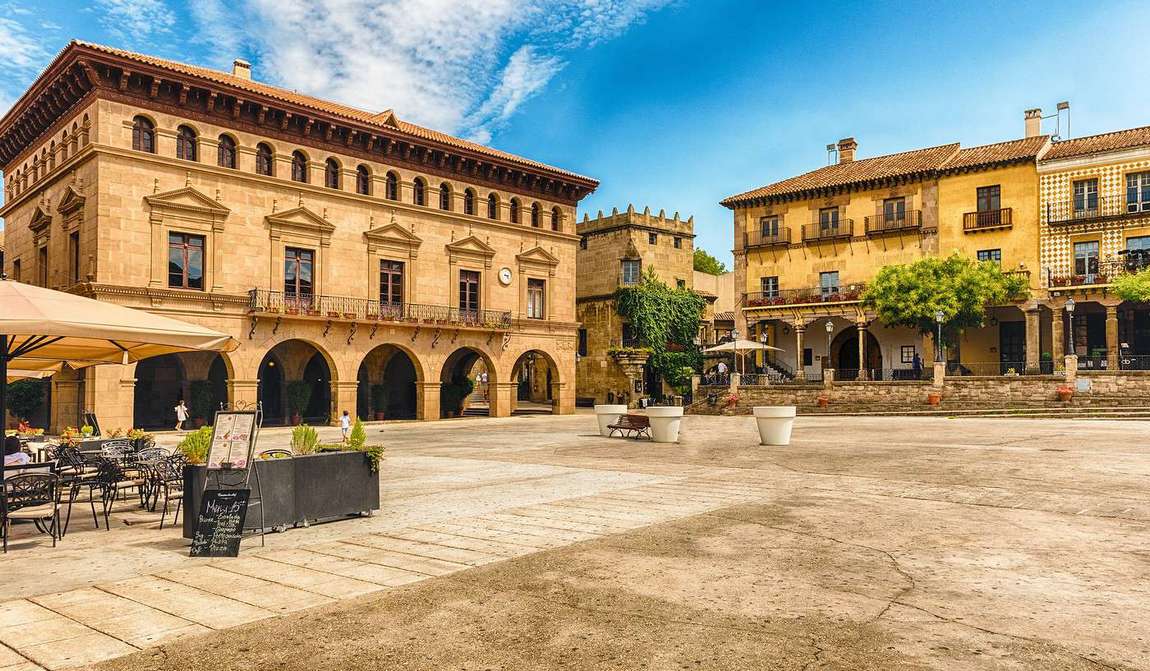
Like many other pavilions and buildings, this complex was built on the eve of the World Expo, using a variety of architectural styles. At Poble Espanyol, you can visit restaurants and cafés, buy handicrafts made by local craftsmen and visit an exhibition of works by contemporary artists.
The artificial village comprises 117 life-sized houses, craft workshops, shops, bars and churches. It covers 49,000 m2 and is an idealized model of an Iberian settlement.
It is a 15-minute walk from the centre of the square to the village.
Interesting Facts
.jpg)
- It is the second largest square in Spain.
- The Spaniards consider Placa Espanya to be the heart of the city.
- Until 1977, bullfights were held in the Plaza de España, in the current building of the Las Arenas shopping centre.
- The four columns in front of the National Palace of Barcelona, symbolizing the stripes of the Catalan flag, were built ten years earlier, in 1919. In 1928, a year before the exhibition, the columns were demolished by order of the dictator Rivera, and they were restored and returned to their place only in 2010.
- It is on Mount Montjuic that the Lewis Company Olympic Stadium is located.
Travel Tips
If you want to walk to Placa Espanya on foot, the best place to start is at Plaça Catalunya, leading you to Gran Via de les Corts Catalanes. The many boutiques, cafés and shops along the way will make the hour and a half walk seem like the blink of an eye.
Plus, the Placa des Espanya connects to several other major streets in Barcelona. They are also rich in attractions and entertainment.
Whoever decides to visit Palau Nacional will have to climb hundreds of stairs (some of them can be taken by escalator), so it's best to choose not the hottest day. The best time to visit is the first Sunday of the month when entry to the museum is free.
If you're lucky enough, you can attend one of the concerts that are often organised right on the square. A stage is set up between the Venetian columns.
Bring your children to the square if you're planning a trip to Barcelona for New Year's Eve. This is where all the grandest entertainment takes place. If you look at Barcelona's Plaza España on a map, you'll see plenty of hotels with different numbers of stars around.
If you plan on spending more than three days in Barcelona, the Barcelona Card is the best option, providing free transportation, tours and significant discounts on museums and purchases.
As you can see, your trip promises to be exciting and comfortable. Enjoy the monumental architecture, good shopping, delicious food and entertainment in Barcelona's Plaza España.


